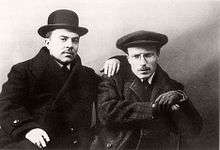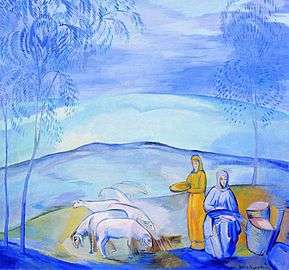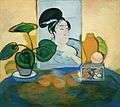Pavel Kuznetsov

Pavel Varfolomevich Kusnetsov (1878–1968) was a Russian painter and graphic artist.
He studied at Saratov at Bogolyubov Art School (1891-6), then Moscow School of Painting, Sculpture and Architecture (1897–1904) and for a year in Paris (1905). His early paintings were exhibited by the Mir Iskusstva group, and he was closely associated with the Russian Symbolists. He helped to organize the Crimson Rose exhibition (1904) and was a founder and leader of the Blue Rose in 1907. He taught at the Stroganov Institute (1917–18; 1945-8) and at the Moscow Institute of Fine Arts (1918–37). He headed the painting section of Narkompros until 1921, but fell out of official favour with the advent of Socialist Realism.
Kuznetsov's early paintings are typical of the Blue Rose group's poetic explorations of an interior, imaginative world through archetypal symbols. After 1910 he drew increasingly on folk culture, continuing to draw on the rich colours and harmonious rhythms of the Symbolists but simplifying his compositions to depict the everyday life of village communities of Kirghizstan in Central Asia.
Works
 Blue Fountain, 1905
Blue Fountain, 1905 In the steppes. Mirage, 1911
In the steppes. Mirage, 1911 Still life with a Japanese Engraving, 1912
Still life with a Japanese Engraving, 1912 Eastern Motive, 1913-1914
Eastern Motive, 1913-1914 Harvesting of Fruits, 1913-1914
Harvesting of Fruits, 1913-1914
| Wikimedia Commons has media related to Pavel Kuznetsov. |
References
- Stupples, P., Pavel Kuznetsov: His Life and Art, Cambridge, 1989
References
- House Museum of Pavel V. Kuznetsov at the Artist's Studio Museum Network